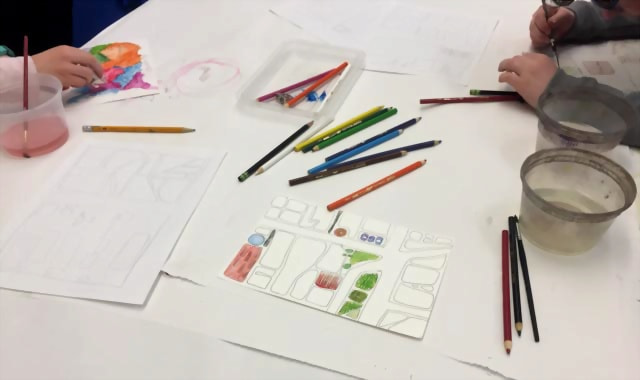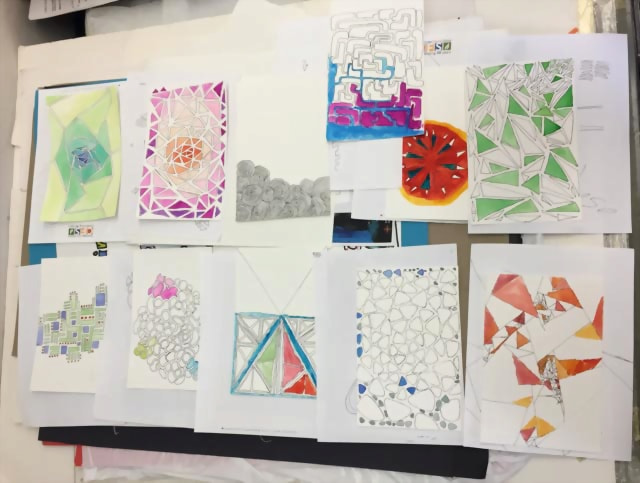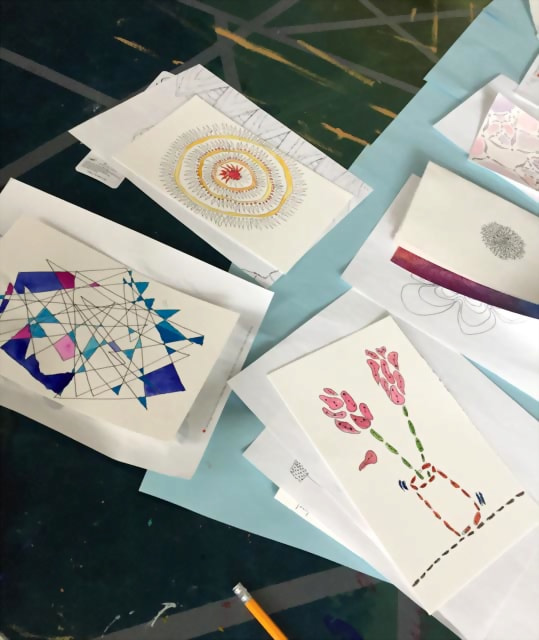
I was recently invited by an art instructor at Cambridge Friends school for pre-K through 8th grade in Cambridge, MA to teach a short program as part of their Makers in Residence program.

We discussed the subjects relevant to the different grades and settled on exploring the connection between biological imagery and maps with 3rd and 4th graders, and a more materials-focused approach for 7th graders.
My first class of the day was the 7th grade. They were just starting watercolor, and my pattern-based approach would be their introduction.
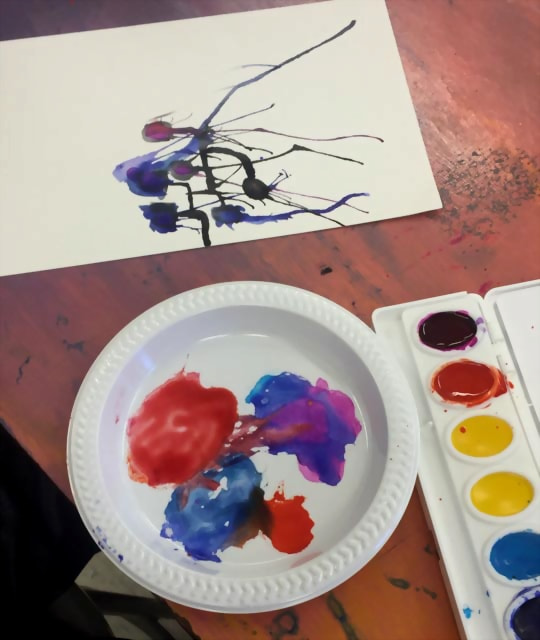

I gave a short explanation of what I do and what my inspirations are, and then set out the activity. Students would be sketching out drawing “rules”—something iterative (i.e. building on itself, like a doodle or a mandala) that they could use to fill a page. I asked them to first sketch out four patterns on scrap paper and then choose one to expand on and fill a page of watercolor paper. We used waterproof micron pens so that when we subsequently interacted with the design using watercolor, the pen wouldn’t bleed.


For the 3rd + 4th grades, who were in the midst of learning about maps, I chose to do a shorter thumbnailing exercise on maps and then a materials-based approach to expanding the chosen sketch where we gradually introduced waterproof pen and water-soluble pencils.
I introduced the aesthetic connection between maps and biological imagery, although most students were less abstract and chose to do a map based on an existing place.
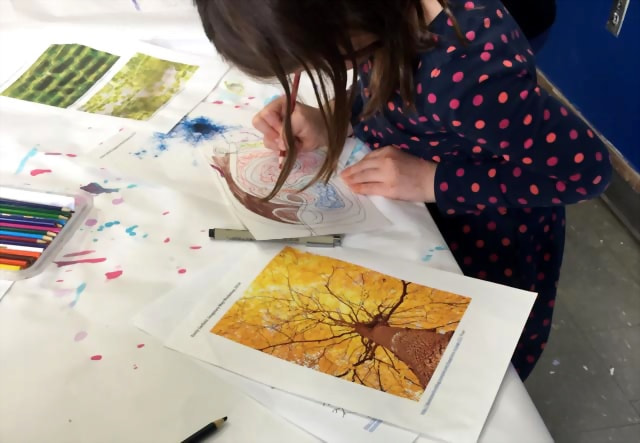



I always find I learn a lot from the way students interpret my lessons. Some of the solutions they came up with this time were particularly interesting.
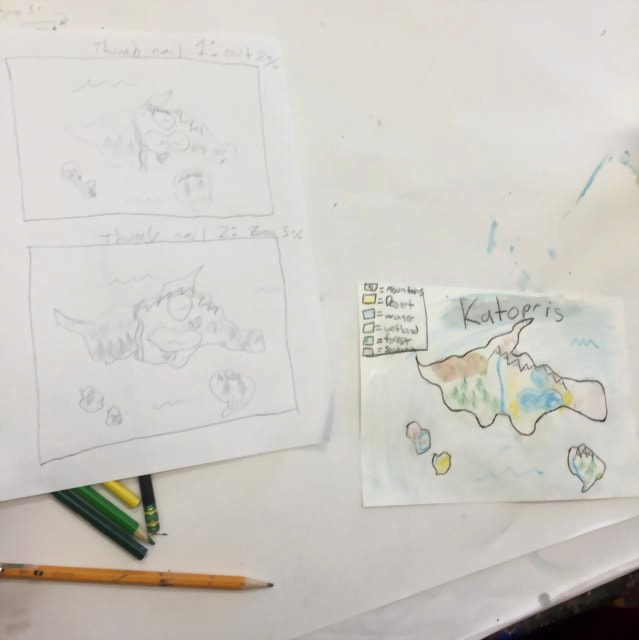
I loved this 3/4th grade project where the student decided to sketch the same map twice—with different (and thoroughly labeled) zoom levels.
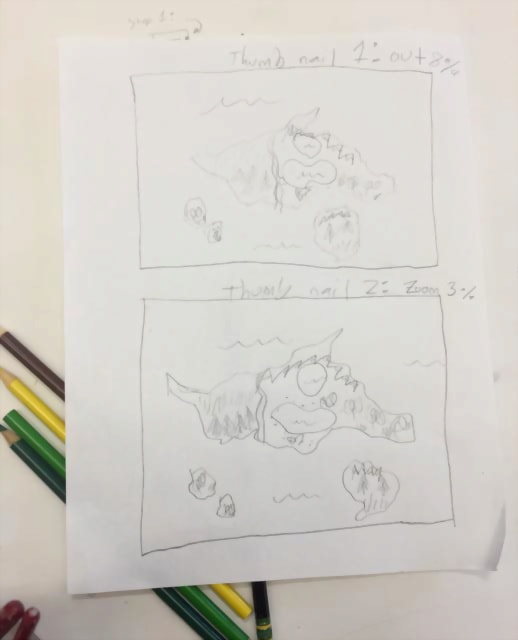

It surprised me when the 7th graders complained that they didn’t know how to fill the page before the time was up, even when I provided intermittent time checks. But when I suggested making their patterns larger as they finished up to fill the available space, that seemed to solve the problem—and didn’t ruin the design, as I suspect they feared.
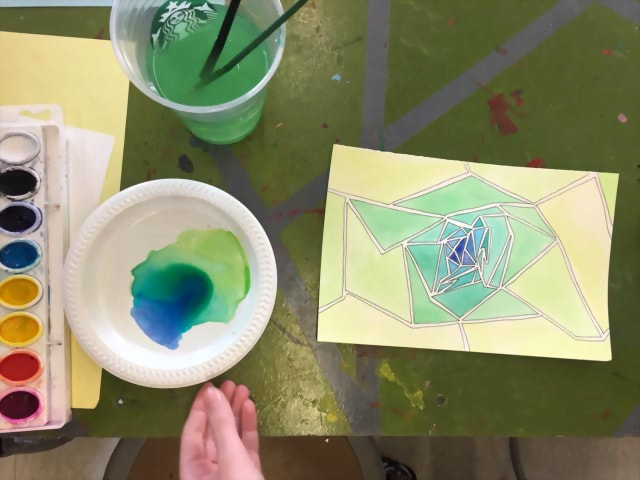
Overall, I appreciated the opportunity to hone some of my workshop materials, especially when it came to using thumbnails and describing iteration as a “rule” instead of the mathematics-tinged words I tend to use like “algorithm” and “fractal”. I hope it helps start the students thinking about alternative ways to use watercolor and new tools to facilitate their own creativity.
